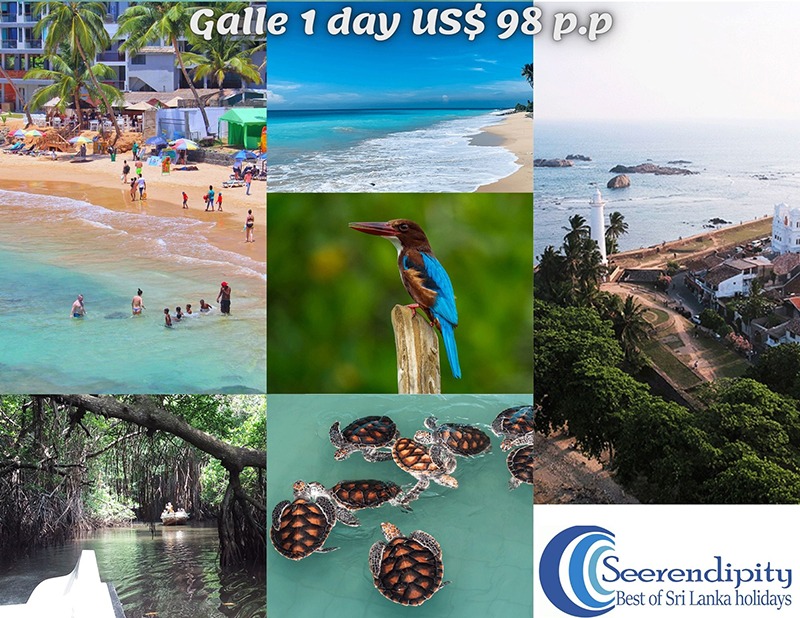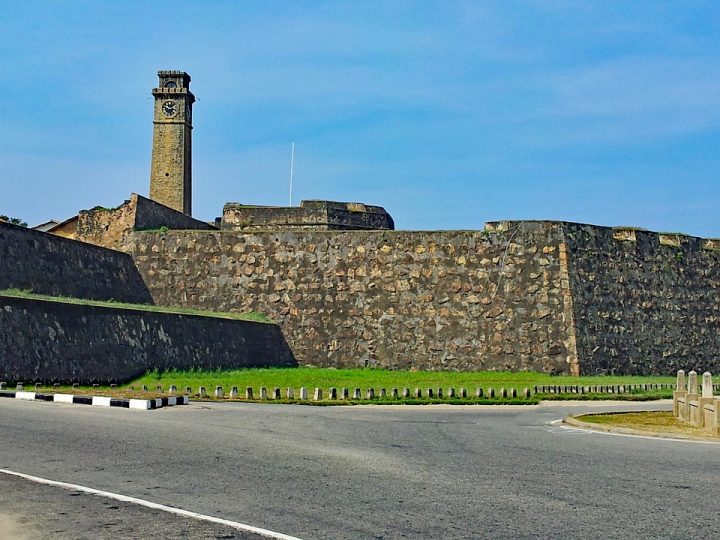
Galle Fort Sri Lanka
Galle Fort, a UNESCO World Heritage site that perfectly blends colonial charm with tropical allure. In this guide, we’ll take you on a journey through the cobblestone streets, historic buildings, and hidden gems that make Galle Fort a must-visit spot on your Sri Lankan adventure.
Table of Contents
- Galle Fort Sri Lanka
- How big is Galle Fort?
- A Brief History of Galle Fort
- Why Visit Galle Fort?
- Galle Sri Lanka
- Where is Galle Fort?
- 8 Important articles to read before planing the Galle tour
- How to visit Galle?
- Galle Fort as a holiday destination
- Galle Fort as a tourist attraction
- What is the Importance of Galle Fort?
- The beginning of Galle Fort
- Galle Fort during the Dutch rule
- Dutch Fort was taken over by the British
- Top 10 Must-Visit Attractions in Galle Fort
- Ramayana and Galle
- Rumassala
- Ancient seaport Tarshish, is it the Galle harbour?
- The landing of Lorenzo De Almeida in Galle
- Dutch Fort considered being the best-preserved fortified city built by European colonial powers in Asia
- Galle is a major tourist attraction in Southern Sri Lanka
- Do we need to pay Entrance fees to Galle Fort?
- What time opens the Galle Fort?
- Galle Fort walking tour
- Best Time to Visit Galle Fort
- Getting to and Around Galle Fort
- Practical Tips for Visiting Galle Fort
- Responsible Tourism in Galle Fort
- Day Trips from Galle Fort
- Conclusion: Your Galle Fort Adventure Awaits!
Galle Fort Sri Lanka
According to James Emerson Tennent, Galle was the ancient seaport of Tarshish, from which King Solomon drew ivory, peacocks and other valuables. Cinnamon was exported from Sri Lanka as early as 1400 BC, and the root of the word itself is Hebrew, so Galle may have been a main seaport for the spices.
Galle is only 1 hour away from Colombo on the southern expressway, Galle is one of the most populated cities in southern Sri Lanka and it is one of the most popular destinations for tourists. Galle is a multi-faceted holiday destination with pristine beaches, patches of forests, lakes, rivers, diving, snorkelling sites and water sports centres. Taking a venturing on Sri Lanka’s south coast tour is the best way to venture into this fascinating tourist attraction.
The Galle Fort, sandwiched between the Indian Ocean and the most picturesque cricket stadium in the world (Galle Cricket Stadium), which is the best-preserved colonial fort in Asia, is filled with 18th-century Dutch architecture, and is a UNESCO world heritage site. A sizable granite wall and thousands of Dutch-built mansions surround the mediaeval city, protecting it from the hundreds of thousands of visitors who pass through each day. Most of the construction in the fort has been converted to shops, dormitories, galleries, museums, pubs, and hotels.
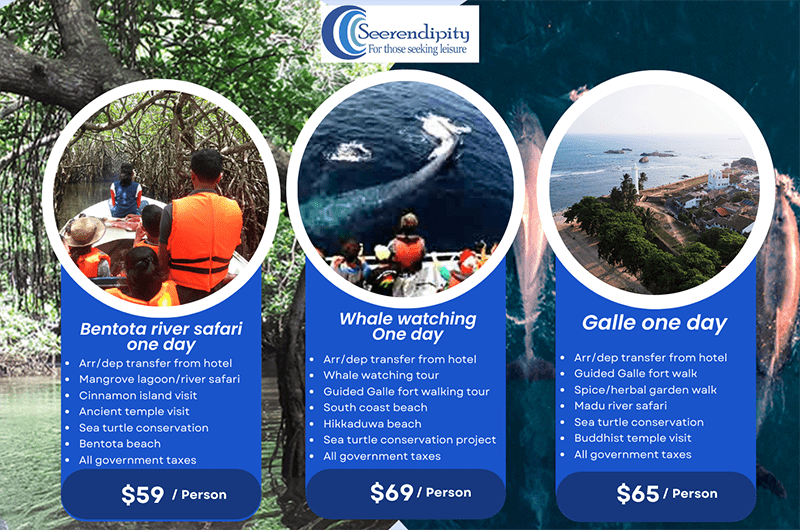
How big is Galle Fort?
Galle Fort spreads over an area of 52 hectares (130 acres).
A Brief History of Galle Fort
Galle Fort’s story is as colorful as its streets. Here’s a quick rundown:
- 1588: Portuguese first fortified the area
- 1640: Dutch captured Galle and expanded the fortifications
- 1796: British took over but made few changes to the fort
- 2004: Survived the devastating tsunami, showcasing its robust construction
- Present Day: A thriving tourist destination and living heritage site
Why Visit Galle Fort?
Before we delve into the details, let’s talk about why Galle Fort should be at the top of your travel bucket list:
- Rich History: A fascinating blend of Portuguese, Dutch, and British colonial influences
- Stunning Architecture: Well-preserved fortifications and charming buildings
- Cultural Melting Pot: A unique mix of European and South Asian cultures
- Beautiful Beaches: Gorgeous coastal views and nearby pristine beaches
- Vibrant Art Scene: Galleries, museums, and craft shops galore
- Culinary Delights: From street food to fine dining, a treat for food lovers
Galle Sri Lanka
Galle Sri Lanka is one of the fascinating cities and it has a vibrant history dating back to the pre-Christian era. It offers a wealth of history, nature, and culture best of all, pristine palm-fringed beaches! Galle Sri Lanka is popular for warm, friendly, and hospitable people. From amazing rainforests and marine reserves to colonial palaces with Dutch colonial heritage, Galle Sri Lanka offers a large number of tourist attractions to suit every traveller and every budget. Galle, being a major city in southern Sri Lanka, offers plenty of opportunities for shoppers too.
Galle Fort like the Jaffna fort in northern Sri Lanka is an archaeological masterpiece, and archaeologists highly adorn the unique architecture of the Fort. The “horseshoe” shaped windows and steep roofs with big verandah like the one you will see at Wolvendaal church of Galle are some of the architectural highlights of the region. Also worth noting are the ornate facades, amazing masks, delicate figures, and intricate designs that adorn many of the buildings.
Where is Galle Fort?
Galle is a beautiful city in southern Sri Lanka, which is 118 KM south of the Commercial capital (Colombo) of the island. Galle is been considered an important historical city and is declared a UNESCO world heritage site, owing to the presence of Galle Fort. This historical city is located bordering the beautiful beaches of southern Sri Lanka. Therefore, Galle is popular not only among local travellers but also among foreigners and the Galle tour is an important tour to most travellers. Today, Galle can be described as the single most important tourist attraction and part of almost every Sri Lanka tour itinerary.
8 Important articles to read before planing the Galle tour
- The Dutch Reformed Church Galle
- Things to see in Galle
- 8 one-day outing places in Galle for a day tour
- Galle Lighthouse
- From Bentota to Galle and Colombo to Galle
- Bentota To Galle Day Tour
- Galle Sri Lanka With Old-world Charm And Palm Fringed Beaches
- What To See in Galle On A Galle Sightseeing Tour
How to visit Galle?
Galle is one of the easiest tourist places to visit from Colombo due to the newly built southern motorway. It has become very easy to visit Galle from Colombo using the highway and it takes just a one-hour drive from Colombo. A large number of Sri Lanka tour operators, such as Seerendipity Tours, organise one-day trips to Galle from Colombo and beach resorts on a daily basis. Most of these Galle day tours not only give you the opportunity to explore Galle but also dozens of other interesting places that you encounter during the drive from Colombo to Galle.
Galle Fort as a holiday destination
Just like most other beach holiday destinations in Sri Lanka, Galle Sri Lanka also offers a number of tours within the city and outside. If you find it difficult to organise the Sri Lanka tours on your own, you can seek the help of Seerendipity tours. We regularly offer trips to Galle Sri Lanka and to most other tourist attractions in Sri Lanka. Taking part in a tour to Galle, Sri Lanka, allows you to see the typical southern Sri Lankan culture, introducing you to traditional customs, costumes, foods, literature, art and crafts, and another typical movement of the people of Galle.
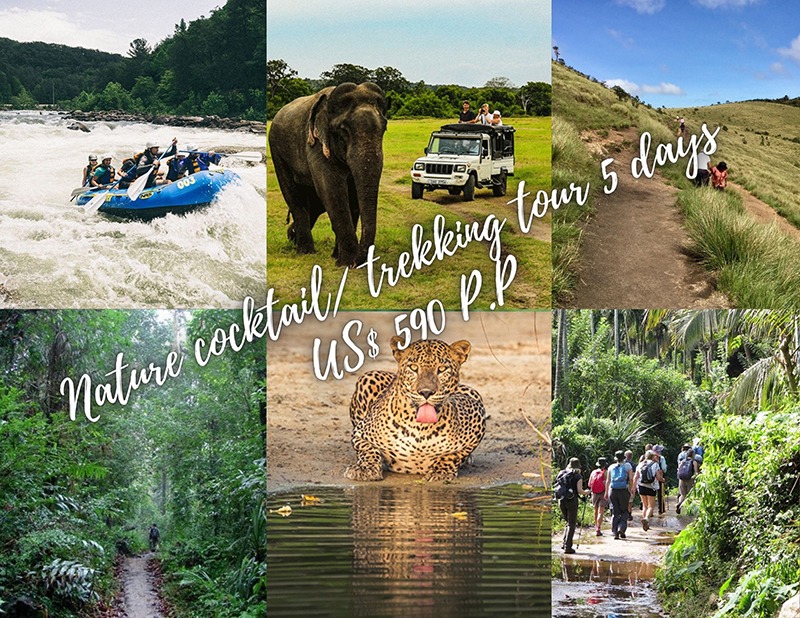
Galle Fort as a tourist attraction
The Fort is the most historical part of the city, which is a part of every Galle day tour. The fort is located towards the picturesque, western flank of Sri Lankan southern province, surrounded by the sea from three sides and opening to the mainland on one side, The mediaeval fortress of Galle rises more than a dozen of metres from the sandy beaches like a golden castle. Built beginning in 1505, the land-filled citadel stands guard atop the highest spot between Galle city and the beach.
The Dutch Fort is the most important tourist attraction in Galle Sri Lanka and this iconic tourist attraction is included in most Sri Lanka tour holidays. The cobblestone pathways are lined with whitewashed Dutch-style shops, houses, museums, galleries, and boutique hotels. A few places on earth can match the beautiful settings of this colonial walled city. But this UNESCO world heritage site is about much more than colonial charm and Dutch architecture.
What is the Importance of Galle Fort?
Galle Fort is the best preserved Dutch fort in the whole South Asian region. The high-rise wall of the fort demarcates the older part of Galle city. The fort is built on a headland of which three sides are surrounded by the Indian Ocean. The rampart of the Galle Fort is measured to be more than 2.5 km long and attracts thousands of foreigners as well as local people. People are using the rampart for evening walks while enjoying the nice view and soothing breeze of the Indian Ocean.
Galle has been a popular trade emporium in the Orient since the dawn of commerce. Galle is not only significant for Sri Lankan commerce but also for the history of Sri Lanka. According to the old testament, Galle harbour was the port (Tarshish), where King Solomon drew valuables such as gems. Other than the historical reasons and economical background, the Dutch fort is the most important single factor, which made the city a UNESCO world heritage site. Dutch fort is dating back to the 15s and showcases typical Old Dutch architecture and urban planning.
The beginning of Galle Fort
The beginning of the fort is attributed to the Portuguese arrival in 1505. Heavy wind caused a Portuguese fleet under the command of Lorenzo De Almeida to veer off course and unintentionally land in Galle. Later in 1587, the thriving trading port of Galle was forcefully taken over by the Portuguese, restricting the access of the Kandyan kings to the maritime region.
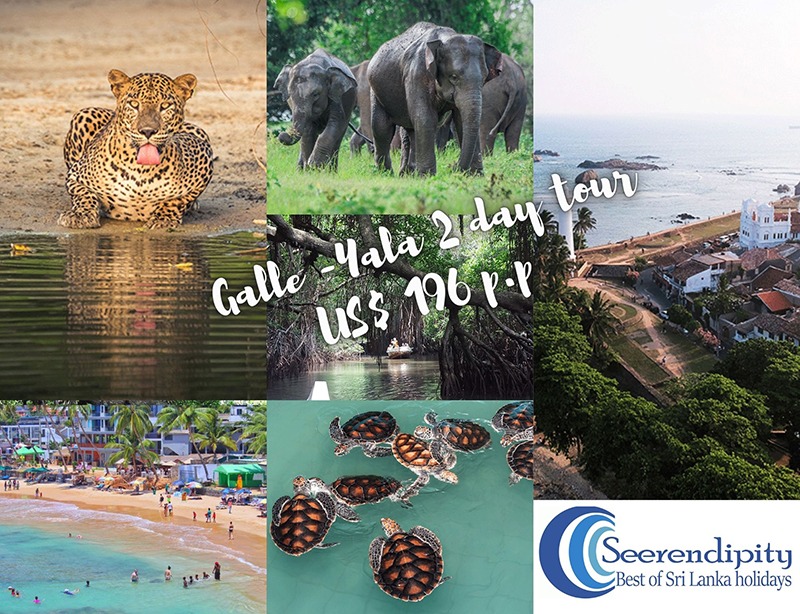
Galle Fort during the Dutch rule
After the arrival of the Dutch colonial rulers, the fort was expanded to its present size. A large number of constructions were added to the city with a sophisticated underground sewer drainage system. Most of the old constructions are still in good condition and have been used for the last several centuries.
Even though the Galle fort was occupied by the English in the 1800s, it was the Dutch who made the strongest impact on Galle town, Galle Fort, harbour, and the people of the area. The town and Fort still retain the Old Dutch characteristics, Dutch architecture, names, and streets are almost not changed since they were first constructed. Leyn Baan Street (Lijnbaan meaning rope walk in Dutch), Lighthouse street (Zeeburg Street), and Great and Small Modarabaay Streets (Modderbaai) are some of the popular names of the Streets of the fort.
Dutch Fort was taken over by the British
In 1796, the British took over the Dutch fort. The British made some minor changes to the fort and added a new entrance. British administration was more concentrated on Colombo than Galle; therefore, the Dutch fort was largely neglected by the British administration. Due to this reason, the city remained with typical Dutch monuments throughout the British administration. Even today, it is regarded as a significant monument from the Dutch Era. At present, the fort is under the purview of the archaeological department and the Galle heritage foundation.
Top 10 Must-Visit Attractions in Galle Fort
1. Galle Fort Lighthouse
Start your journey at this iconic landmark, perfect for that postcard-worthy shot.
Pro Tip: Visit during sunset for breathtaking views and photos.
2. Flag Rock
Once a Portuguese bastion, now a popular spot for cliff jumping (though we don’t recommend trying it yourself!).
3. Dutch Reformed Church
Step inside this 1755 church to admire its baroque-style architecture and historic gravestones.
4. National Maritime Museum
Dive into Sri Lanka’s rich maritime history through artifacts and interactive exhibits.
5. Old Gate (Porta de Sol)
Walk through this historic entrance, featuring the British coat of arms on one side and the Dutch VOC emblem on the other.
6. Galle Fort Clock Tower
A symbol of the fort’s resilience, rebuilt after damage from a lightning strike in the 1800s.
7. All Saints Anglican Church
A beautiful example of Gothic Revival architecture, built in 1871.
8. Meeran Mosque
Admire the unique blend of British and Islamic architectural styles in this historic mosque.
9. Sudharmalaya Temple
Discover a slice of Buddhist culture within the fort walls.
10. The Rampart
Take a leisurely stroll along the fort walls for panoramic ocean views.
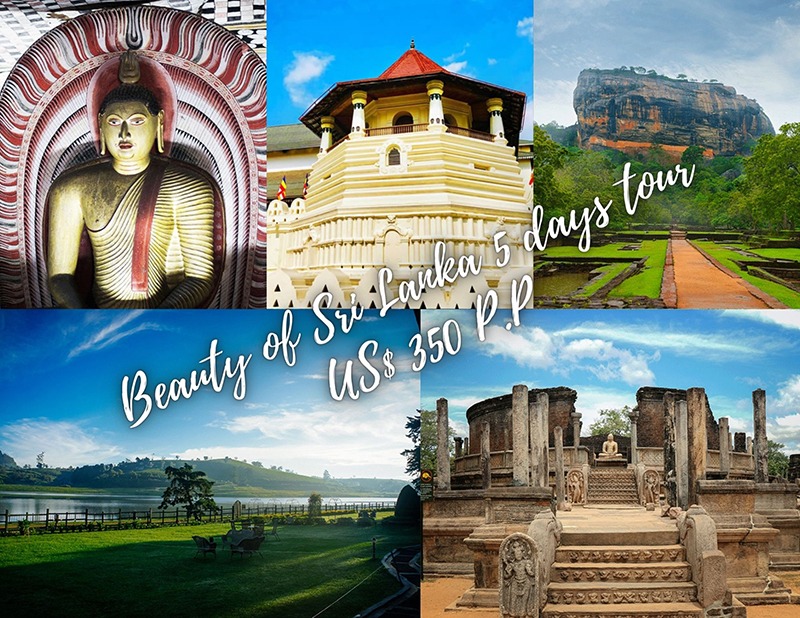
Ramayana and Galle
According to the historical evidence; the history of the city goes back to the Pre-Christian era. The first historical event of the city is related to Ramayana. The greater part of Sri Lanka is said in the Ramayana to have been submerged in the sea, and the Great Bases Lighthouse, which stands out on a solitary rock in the southeast sea of the island, is still called Ravana’s fort.
Rumassala
Rumassala forest, which is located on the southern border of the city, came to be a result of the Rama-Rawana war. When Laxmana was wounded in the war against Ravana, Rama ordered Hanuman (Monkey God) to fetch some medicine from the Himalayas. As Hanuman forgot the names of the herbs, he snatched a part of Himalaya and flew back to the island. Today Rumassala is considered to be a piece of the mountain that he fetched from India.
Ancient seaport Tarshish, is it the Galle harbour?
According to James Emerson Tennent, Galle was the ancient seaport of Tarshish, from which King Solomon drew ivory, peacocks, and other valuables. Cinnamon was exported from Sri Lanka as early as 1400 BC and the root of the word itself is Hebrew, so Galle may have been a main seaport for the spices. It had been an important trading port in the east, where a lot of merchants flocked in to exchange goods. Galle harbour had been an important foreign exchange earner for the country in the early days in the form of tax. It is said kings levied huge taxes on the merchant ships, which were harboured in Galle.
The landing of Lorenzo De Almeida in Galle
When the Portuguese merchant ship under the command of Lorenzo de Almeida accidently touched down in 1505, they were astounded to see the bustling port and the city’s trading activities. The Galle name is derived from the Portuguese word Gallus, as the story conveys, a Portuguese ship was caught in a storm and drifting in the ocean before it landed in southern Sri Lanka. As the ship was nearing the land, they heard a Cock from the land, and one shouted “Gallus Gallus”, Later on, the word Gallus became Galle, as it is called today.
Dutch Fort considered being the best-preserved fortified city built by European colonial powers in Asia
Galle Dutch Fort The best-preserved fortified city in Asia that European colonial powers built is a UNESCO World Heritage Site. As the Portuguese controlled the maritime region of the island, they took the initiative of the Galle Fort.
It had initially been a small fortification with a few soldiers living there. As the Dutch rulers took over the control of the maritime region, they expanded the Galle fort, making it the biggest fort in the country. They converted the fort, into a well-formed city with all the facilities. Still, most of the buildings are in typical Dutch architecture, while the names of streets, houses, and other buildings are in the typical Dutch language. Under British rule, no remarkable changes were done to the fort.
Galle is a major tourist attraction in Southern Sri Lanka
Today it is one of the major attractions in southern Sri Lanka with a lot of cultural and historical value. Dutch fort houses many churches, temples, as well as other religious buildings. One encounters a lot of souvenir shops, textile shops, jewellery shops, museums, and street vendors in the fort. It can be busy in the fort, particularly in the evening and at weekends, while locals are coming to enjoy the nice, calm, peaceful environment with the old charm.
Do we need to pay Entrance fees to Galle Fort?
No entrance at Galle Fort. Falle fort is under the supervision of the archaeological department and the Galle municipal council. It is one of the highly residential areas in Galle. However, it attracts many thousands of tourists every day due to its historical importance and architectural importance. Despite its popularity and importance, none of the visitors is required to spend money to enter the Fort. However, few tourist attractions located within the Fort, such as the maritime museum, demand your money to allow access. None of the visitors is charged for entering Galle Fort, and most of the important tourist attractions located in the Fort are also free of charge. However, there are only a few tourist attractions in the Fort, such as Galle maritime museum, where you are required to purchase an entrance ticket.
What time opens the Galle Fort?
Galle Fort is open 24 hours a day. You might be wondering what time to visit the Galle Fort, the answer is there is no particular time to visit Galle Fort. We receive many emails from travellers asking if there is any particular time of the day for visiting Galle fort. The answer is the Fort is open 24 hours a day. There are no regulations pertaining to the visiting hours of Galle Fort and the fort is open at any time of the day. However, for those who want to see this beautiful colonial city, I recommend it from 08.00 to 17.00. During the day hotels, restaurants, bars cafes, shops, galleries, and museums are open. It is easy to walk along the rampart during the daytime.
Galle Fort walking tour
Galle walking tour invariably means the Galle fort walking tour because Galle fort is the most important tourist attraction in the city and the rest of the city has the typical characteristics of a busy city. The Galle Fort walking tour may last from 30 minutes to many hours, depending on your interest in exploring the attractions of Galle Fort.
There is a labyrinthine cobbled street in the Fort and they are lined up with hundreds of thousands of Dutch-built buildings. Some of the buildings are more than 200 years old and still in very good shape. Some of the buildings are converted into museums, libraries, shops, and hotels allowing the guests to spend some time buying various artefacts, souvenirs, clothes, gems, and jewellery as well as sampling delicious Sri Lankan food.
Best Time to Visit Galle Fort
Galle Fort can be visited year-round, but here are some seasonal considerations:
- December to April: Dry season, ideal weather but more crowded
- May to November: Some rain, but fewer tourists and lush green landscapes
Event Alert: The Galle Literary Festival, usually held in January, is a major draw for book lovers and cultural enthusiasts.
Getting to and Around Galle Fort
- From Colombo: 2-3 hour drive or scenic train ride along the coast
- From Mirissa: 45-minute drive
Within the fort, walking is the best way to explore. The compact size means you can cover most sights on foot.
Practical Tips for Visiting Galle Fort
- Wear comfortable shoes: The streets can be uneven in places.
- Bring sun protection: The tropical sun can be intense.
- Carry cash: Some smaller shops and cafes may not accept cards.
- Respect local customs: Dress modestly, especially when visiting religious sites.
- Stay hydrated: The tropical climate can be dehydrating.
Responsible Tourism in Galle Fort
As visitors, we play a crucial role in preserving this historic site. Here’s how to be a responsible tourist:
- Support local businesses: Buy from local artisans and eat at local restaurants.
- Minimize plastic use: Bring a reusable water bottle and shopping bag.
- Respect the living heritage: Remember that Galle Fort is home to a local community.
- Conserve energy: Many hotels in the fort are in historic buildings with limited resources.
Day Trips from Galle Fort
If you have extra time, consider these nearby attractions:
- Unawatuna Beach: Beautiful beach just 6 km from Galle
- Hikkaduwa: Known for surfing and marine life (15 km)
- Koggala Lake: For boat rides and bird watching (13 km)
- Mirissa: Popular for whale watching (40 km)
Conclusion: Your Galle Fort Adventure Awaits!
Galle Fort isn’t just a destination; it’s a journey through time, culture, and beauty. From its historic ramparts to its vibrant streets, every corner of this coastal gem has a story to tell. Whether you’re a history buff, a foodie, a shopaholic, or simply in search of that perfect Instagram shot, Galle Fort has something for everyone.
Remember, the magic of Galle Fort lies not just in its sights, but in the experience of wandering its streets, chatting with locals, and soaking in the unique atmosphere. Take your time, explore at a leisurely pace, and let the charm of this historic fortress-town captivate you.
So, are you ready to explore the wonders of Galle Fort? Pack your curiosity, bring your sense of adventure, and prepare for an unforgettable journey through one of Sri Lanka’s most enchanting destinations. The secrets of Galle Fort are waiting to be discovered – let’s go uncover them together!

